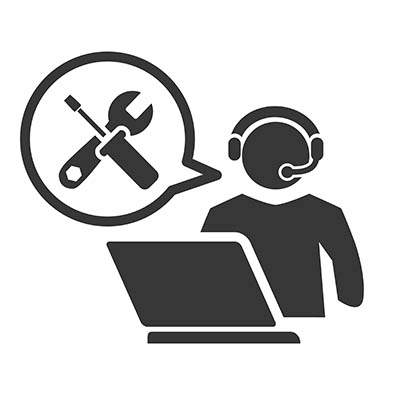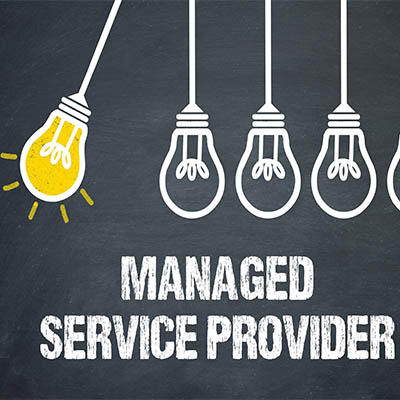There are generally two approaches to technology maintenance. One of them addresses issues as they appear, and the other involves addressing possible issues before they become operational problems. How does your business go about technology maintenance? If it’s the first, also known as “break-fix” IT, then you are going about things the wrong way and leaving a ton of savings on the table.
When it comes to your business technology, you shouldn’t settle for anything less than the best. Unfortunately, technology is one facet of running a company where many business owners feel they have the least amount of control, perhaps due to its many moving parts and overwhelming complexity. The question becomes one of how you want to approach managing your business’ technology and finding the right skill sets to do so.
It comes as no surprise that IT maintenance and management is a pain point for small businesses. Perhaps they don’t have the resources to perform in-house maintenance because they lack the funds to hire trained technicians, a practice which leads them to rely on existing resources to make it happen. Unfortunately, this leads to inconsistent maintenance at best, a practice that can be both dangerous and wasteful in the long term. We’re here to tell you that not only is proactive maintenance important, but that remote maintenance is the best way to make it happen.
Small businesses are often in a precarious position with technology management, struggling with budgeting and acquisition of new technology as well as the difficulties that come with hiring top talent. Thankfully, they have an ace up their sleeves that allows them to stay competitive: managed IT services. With a great managed service provider helming their technology strategies, small business owners have a lot less to worry about than they might otherwise… at least in terms of their technology, anyway.
Revenue generation is the name of the game for businesses. That’s why the decisions they make with their available capital are really important. SMBs especially need to have a rapid and noticeable return on their investments if they want to keep pace. To that end, technology is one investment that can provide that kind of fast ROI. Here are three ways you can use technology to benefit your business.
Regardless of what your business does, there is a good chance that it relies pretty heavily on technology. When that technology falters, so does your business. Sure, this might be for a couple hours at a time, but it all adds up and has a major impact on the success of your business. Many organizations have outsourced their IT support and management, but could benefit from a more proactive approach than the one they currently employ. Today, we will take a look at some of the priorities that businesses should consider when choosing an outsourced IT provider. Proactive Management One of the most crucial elements of a good managed IT services platform is the proactive approach to management. This is due to the fact that by mitigating downtime, an organization will be able to function more efficiently. When we talk about proactive management, we are mainly talking about constant remote monitoring of a network and infrastructure. While some outsourcers will just remotely fix problems that an organization reports, a managed IT services provider will continually monitor the network and infrastructure and use automation to ensure that all of a business’ IT is running smoothly. The whole strategy is to keep downtime to a minimum through conscientious care of the hardware and network using cutting-edge tools designed to automate many of the countless tasks that are needed to do so. The best outsourced IT services will absolutely include proactive monitoring. Backup and Disaster Recovery Sometimes when a business outsources their IT support, they are left to find their own backup system. This can create unnecessary costs, as most managed IT service providers (MSPs) make a point to mention that their backup and disaster recovery platform is central to their offering; and why not? Controlling your data is effectively having control over one of your business’ best assets. A well-functioning BDR should have the ability to backup all assigned data systems incrementally. That way the backup gets as much of your work saved as possible, protecting your business from data loss brought on by any issue, including ransomware, natural disaster, or simple user error. Security Consulting The traditional outsourced IT or break/fix vendor would never consider proactively helping a business avoid the litany of security threats that are out there today. Their business model suggests as much. With an MSP, however, your network’s security is paramount to their ability to be profitable. How’s that? The more problems you have with your network and infrastructure the more time and effort they need to take to ensure your IT is running as promised. As a result, for the MSP to succeed, your business needs to succeed. The IT technicians that work in managed IT services are typically some of the most proficient technicians in your area. They can lend a great deal of knowledge and expertise to keep your business technology assets secure and running as intended. This includes security for your network and infrastructure, your mobile strategies, and even your cloud infrastructure and resources. Patch Management Another proactive measure that a good MSP will deliver is patch management. Most of your supported software continuously releases patches to keep it from being a pathway for infiltration from nefarious outside entities. A good IT services provider will ensure that your software is not only monitored, […]
One of the most valuable things for a business to know, in terms of its cybersecurity, is how vulnerable it is to breaches and exploits. This kind of information can be gathered via a process called penetration testing, or “pen testing.” Let’s go over how the average pen test is conducted to see how these insights are collected.
- 1
- 2







